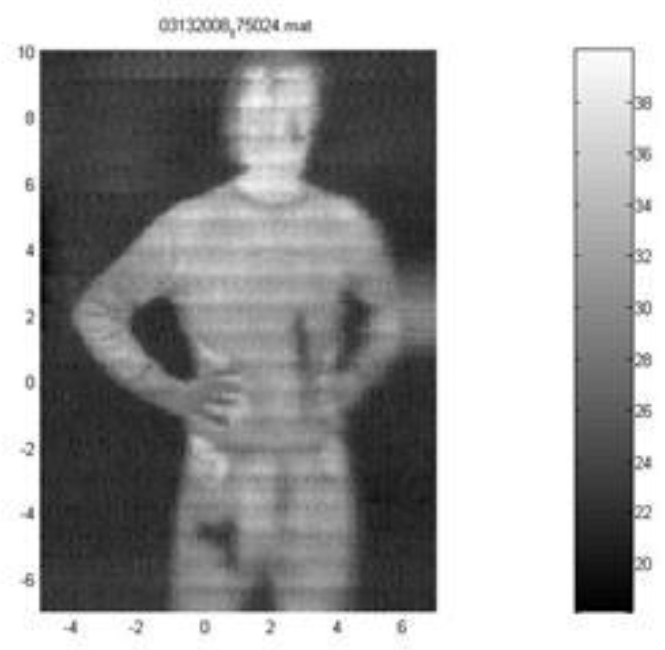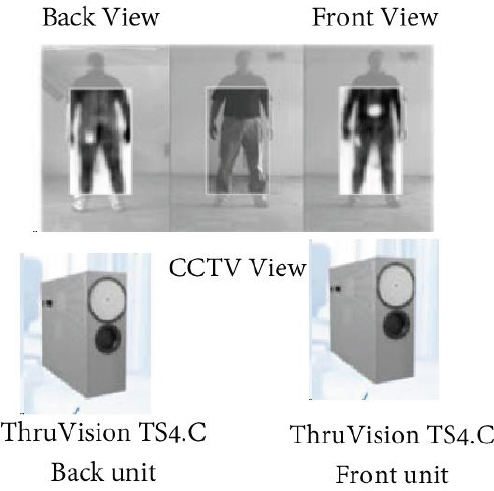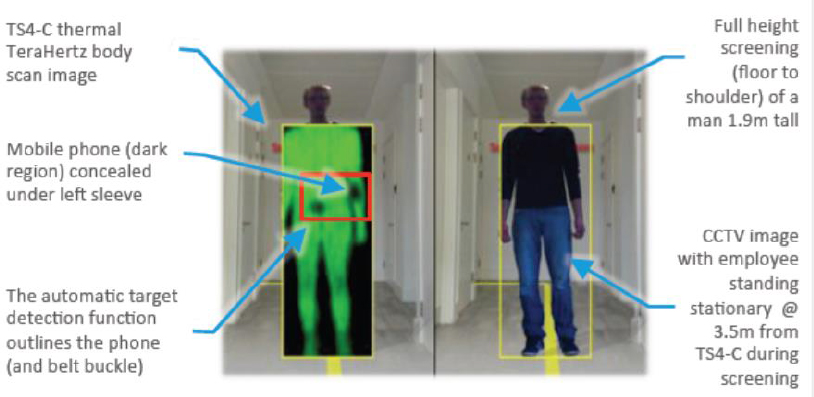D
Millimeter Wave Advanced Imaging Technology: Passive Systems
The human body naturally emits radiation in the millimeter, submillimeter, and infrared ranges. For example, all warm objects emit heat, or infrared radiation, as discussed in Appendix C. Imaging using this natural radiation is termed “passive imaging,” to contrast with imaging using spotlight or “active” sources. Figure D.1 illustrates passive submillimeter and millimeter range detection of concealed weapons.
The temperature of the clothed human body is close to 28°C (298 K). Hence, according to Wien’s law, the peak of the emission is at the wavelength of
 |
(D.1) |
Here, bw is the Wien constant (in Km) and T is temperature, see Figure D.2. This roughly corresponds to frequency close to 30 THz. At lower temperatures, the maximum emission shifts into the millimeter and submillimeter range.
While passive millimeter wave imaging systems have been under investigation and development for over a decade, no such system has yet achieved widespread adoption in the United States.1
A new approach of the terahertz sensing for the detection of concealed objects is represented by the passive detection implemented in the ThruVision TS4.C and ThruVision TS5.C machines from Digital Barriers, LLC. ThruVision TS4.C detects
___________________
1 L. Yujiri, 2006, “Passive Millimeter Wave Imaging,” Microwave Symposium Digest, IEEE MTT-S International, pp. 98-101, doi:10.1109/MWSYM.2006.249938.

objects at distances between 3 and 10 m depending on their sizes and conditions. ThruVision TS5.C detects large objects at distances between 6 and 15 m. Both machines use 0.25 THz sensing arrays with output for closed-circuit television color camera with the frame rate of 6 Hz.2Figure D.3 shows the installation schematic, and Figure D.4 shows an example.
___________________
2 M. Shur, 2016, Recent developments in terahertz sensing technology, Proceedings of SPIE 9836, Micro- and Nanotechnology Sensors, Systems, and Applications VIII, 98362Q (May 25, 2016), doi:10.1117/12.2218682.







